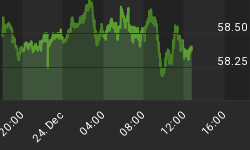The following piece documents the remarkably similar reasons why the bull markets of 1929 and 2000 were unique and should run forever.
Despite this reasoning and with remarkable fidelity, they both lasted for 116 months. That's from the top of the last business cycle with the old era of inflation to the euphoric climax of speculation.
NEW FINANCIAL ERAS: 1990s AND 1920s
The enthusiasms in projecting most new financial eras seem to naturally group into four main reasons. The first is the new era itself, followed by the political shift from left to centre as CPI inflation diminishes with rejuvenation in Europe and opening of new consumer markets. Other points are the celebration of high technology and cost-cutting which were prompted by intense price competition in a disinflationary period. The end of the old era of inflation also provided the appearance of new found discipline in monetary policy.
The 1920s examples are from the well-known article by John Moody in the August, 1928 edition of The Atlantic Monthly. The examples from the 1990s were collected as they appeared in the Wall Street Journal.
NEW ERA | |
Late 1990s: | "Most Wall Street forecasters ... are still scrambling to come up with explanations [for the dramatic rise]. Most people don't realize that there has been a change in the nature of the U.S. business cycle." |
Late 1990s: | "Experts who watch the economy see reason for reassurance ... that several [longer] trends are coming together to fuel a global growth wave that is unprecedented in size and scope. We've entered a golden age that will last for decades." |
MOODY 1928: | "Nearly all of the accredited seers and economic experts have been at a loss to explain it. The mistake ... is to assume that times have not fundamentally changed. They have changed ... and we are in a new and remarkable era." |
POLITICAL SHIFT | |
Late 1990s: | "The rejection of socialism by much of the developed world has also led to greater opportunity for low-cost production from these countries." |
MOODY 1928: | "All the European calamity prophets have been continuously discredited [and] there is a real possibility of a general renaissance developing ... during the coming generation." |
Late 1990s: | "The move to freer markets, in countries where state control stifled commerce in the past, is the best thing for prosperity you could possibly have." |
MOODY 1928: | "[O]ur own experiment in government operation of the railways had gone far to slight the ... propaganda of ... public ownership. After ... the restoration of the railroads to their owners, a remarkable increase in the speeding up of deliveries ... developed." |
HIGH TECH AND COST CUTTING | |
Late 1990s: | "Dramatic enhancements in computer chips and software are revolutionizing every productive activity in U.S. companies ... Costs are dropping rapidly ... Companies are constructing factories where it makes the most economic sense - a cost cutting activity." |
Late 1990s: | "Technological innovation ... creates new industries and mutes business cycles." |
MOODY 1928: | "[D]eclining tendency in commodity prices ... narrowed profit margins. A very direct impetus was thus given to the modern effort toward the more scientific development of mass production and distribution and the cutting out of waste." |
REFORMED MONETARY AUTHORITY | |
Late 1990s: | "Post World War II business cycles have [had] their stops and starts coming from identifiable tightenings and loosenings [by] the Federal Reserve [but if inflation has peaked] the Fed's vigilance has paid off." |
Late 1990s: | "Monetary austerity and fiscal restraint are bolstering growth." "Most economists believe [less government economic stimulus] helps reduce inflationary pressure." |
MOODY 1928: | "Another vital fact which had gone far to stabilize fundamental financial and business conditions ... was the founding of the Federal Reserve Banking System ... The old breeder of financial panics, the National Banking Law, which had been a menace to American progress for two decades, had been replaced by a modern, scientific reserve system which embodied an elastic currency and an orderly control of the money market." |
THIS BULL MARKET
David Brown has come up with a vivid explanation of why bull markets go up forever. It can be applied to the action in any price series.

















